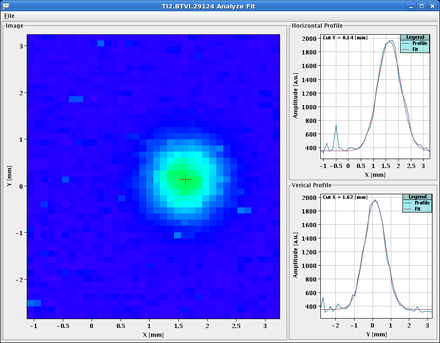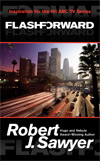18.12.09 LHC ends 2009 run on a high note
![[IMAGE]](http://mediaarchive.cern.ch/MediaArchive/Photo/Public/2009/0912235/0912235_21/0912235_21-A5-at-72-dpi.jpg)
ATLAS spokesperson Fabiola Gianotti addresses a packed auditorium during an LHC status meeting 18 December More photos »
Over the last two weeks, the six LHC experiments have recorded over a million particle collisions, which have been distributed smoothly for analysis around the world on the LHC computing grid. The LHC has now been put into standby mode, and will restart in February 2010 following a short technical stop to prepare for higher energy collisions and the start of the main research programme.
More information
11.12.2009 LHC: progress in commissioning proton beams
![[IMAGE]](http://mediaarchive.cern.ch/MediaArchive/Photo/Public/2009/0911188/0911188_01/0911188_01-A5-at-72-dpi.jpg)
After becoming the world’s highest energy particle accelerator, the LHC is now making progress in commissioning stable beams and providing more collisions at the four points for several hours at a time. For the first time, beams have circulated with more than one bunch of protons, thus increasing the intensity.
More information
30.11.2009 LHC sets new world record
![[IMAGE]](http://mediaarchive.cern.ch/MediaArchive/Photo/Public/2009/0911205/0911205_45/0911205_45-A5-at-72-dpi.jpg)
Scenes of joy in the CERN Control Centre more photos »
Geneva, 30 November 2009. CERN’s Large Hadron Collider has today become the world’s highest energy particle accelerator, having accelerated its twin beams of protons to an energy of 1.18 TeV in the early hours of the morning. This exceeds the previous world record of 0.98 TeV, which had been held by the US Fermi National Accelerator Laboratory’s Tevatron collider since 2001. It marks another important milestone on the road to first physics at the LHC in 2010.
More information
27.11.2009 Spotlight on CERN: The LHC is back
23.11.2009 Two circulating beams bring first collisions in the LHC

Screens showing two beams in the LHC. More photos »
Geneva, 23 November 2009. Today the LHC circulated two beams simultaneously for the first time, allowing the operators to test the synchronization of the beams and giving the experiments their first chance to look for proton-proton collisions.
More information:
20.11.2009 The LHC is back

Happy scenes in the CERN Control Centre. [M.Brice, CERN]
Geneva, 20 November 2009. Particle beams are once again circulating in the world's most powerful particle accelerator, CERN's Large Hadron Collider (LHC). This news comes after the machine was handed over for operation on Wednesday morning. A clockwise circulating beam was established at ten o'clock this evening. This is an important milestone on the road towards first physics at the LHC, expected in 2010.
More information:
20.11.2009 LHC about to restart

The LHC tunnel. Illustration shows the beampipes inside a dipole magnet. [M.Brice, CERN]
On 18 November, the LHC was handed over for operation. Teams are now preparing for injecting and circulating the first beams of 2009.
For latest updates, follow us on Twitter: twitter.com/cern
13.11.2009 CLOUD experiment begins operation
![[View inside the CLOUD chamber]](http://mediaarchive.cern.ch/MediaArchive/Photo/Public/2009/0911185/0911185_11/0911185_11-A5-at-72-dpi.jpg)
The CLOUD experimental chamber. More photos »
CERN is home to lots of experiments and collaborations. CLOUD is an experiment that uses a chamber to study the possible link between cosmic rays and cloud formation. The experiment is based at the Proton Synchrotron; this is the first time a high-energy physics accelerator has been used in the study of atmospheric and climate science. CLOUD's results could greatly modify our understanding of our planet's climate.
Learn more:
9.11.2009 Particles have gone half way round the LHC
![[Screenshot showing a Splash event in the CMS experiment]](../features/0911_CMS_splash.png)
Splash event recorded by the CMS experiment on 7 November. The electromagnetic calorimeter is in red, the hadronic calorimeter in blue, the muon system is yellow and magenta. The barrel muon detector was on standby and the inner tracking detector was off.
On Saturday evening, at around 8 p.m., after passing through the LHCb detector, for the first time since last year's incident, protons arrived at the doorstep of the CMS experiment, thus completing half the journey around the LHC's circumference.
Low energy protons from the LHC were dumped in a collimator just upstream of the CMS cavern. The calorimeters and the muon chambers of the experiment saw the tracks left by particles coming from the dumping point (a so-called 'splash event', see image). During the weekend, bunches of protons were also sent in the clockwise direction passing through the ALICE detector and were dumped at point 3.
30.10.2009 Particles are back in the LHC!
Last weekend (23-25 October) particles once again entered the LHC after the one-year interruption following the incident of September 2008.
Learn more:
23.10.2009 LHC News: The Large Hadron Collider is cool!
The LHC News is a regular video update of what is happening at the LHC. It is posted to CERN's YouTube channel.
Learn more:
16.10.2009 The LHC is cold!
![[Screenshot from the LHC Hardware Commissioning website showing the LHC ring is cold]](../features/0910_LHC_cold.gif)
On Thursday 8 October, sector 6-7 reached the cryogenic temperature of 1.9 K; it was followed, this week, by the last one, Sector 3-4, thus marking an important step towards the final commissioning of the machine.
Learn more:
12.10.2009 LHC News: Particles knock at the door to the LHC
The LHC News is a regular video update of what is happening at the LHC. It is posted to CERN's YouTube channel.
Learn more:
02.10.2009 Lead ions at the doorstep of the LHC for first time

A screenshot showing lead ions in the TI2 transfer line from the Super Proton Synchrotron (SPS) to the LHC
Commissioning of the LHC is progressing according to schedule:
- During the weekend of 25-29 September, particles were injected into the transfer lines that link the SPS to the LHC. These crucial tests showed that the whole injection chain is ready.
- Six out of the eight LHC sectors are at operating temperature.
- The new Quench Detection System and the energy extraction system have both been tested and are performing well.
Learn more:
25.09.2009 FlashForward.

Robert Sawyer's novel FlashForward is currently being transformed into a big budget ABC TV series. Sawyer's book follows a research team using the particle accelerator at CERN in pursuit of the elusive Higgs Boson, a theoretical subatomic particle. But instead of finding the Higgs, the consciousness of the entire human race is thrown ahead by twenty-one years.